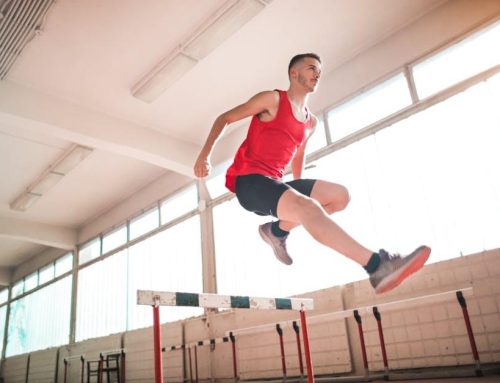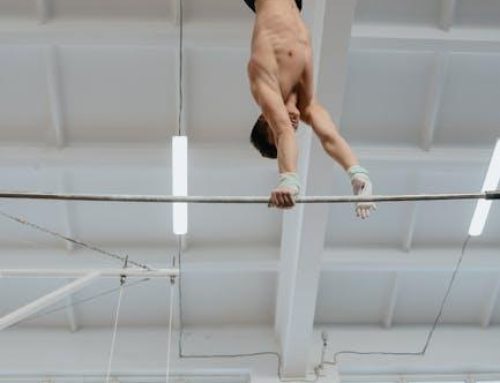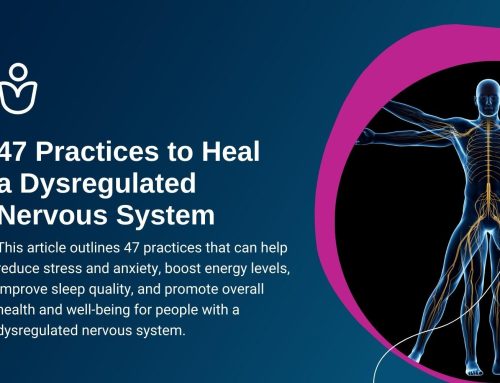Are you tired of feeling sluggish during your workouts? Do you find yourself sweating like a sinner in church but still not seeing the desired results? Well, it’s time to switch up your routine and embrace “lifting on empty” – the power of fasted training! I know what you’re thinking, “Work out on an empty stomach? That’s crazy talk!” But hear me out, my friends. This unconventional method has been gaining popularity in the fitness world, and let me tell you, the results are nothing short of miraculous. So grab a cup of black coffee and let’s dive into the wonderful world of fasted training.
Contents
- 1 1. Gain Muscle and Lose Fat Simultaneously with Fasted Training
- 2 2. Understanding the Science Behind Fasted Training
- 3 3. The Benefits of Training on an Empty Stomach
- 4 4. How to Implement Fasted Training Into Your Fitness Routine
- 5 5. Maximizing Your Results: Tips for Successful Fasted Training Sessions
- 6 Goodbye Food, Hello Gains!
1. Gain Muscle and Lose Fat Simultaneously with Fasted Training
Gaining muscle and losing fat is the ultimate fitness goal for most of us. But what if we told you that you can achieve both simultaneously with fasted training? Yes, you heard it right. No, it’s not some kind of magic. It’s science combined with a bit of willpower and self-control. So, keep reading to know more about this fascinating concept and how to do it like a pro.
First things first, what is fasted training? Fasted training involves working out in a fasted state, which means that you haven’t eaten anything for several hours. Now, don’t go all crazy and starve yourself. Skipping a meal or two is fine, but don’t push your limits. Fasted training helps your body to burn fat for fuel instead of carbohydrates and hence, facilitates weight loss. It also boosts the production of growth hormone, which aids in muscle building. It may sound challenging, but once you get used to it, you’ll be amazed at the results.
So, how do you get started with fasted training? Here are some tips to help you out:
- Caffeine is your friend: Sip on a cup of coffee or tea before your workout. Caffeine increases your metabolism and helps in fat burning.
- Start slow: If you’re not used to working out in a fasted state, start with low-intensity exercises and gradually increase the intensity. Take breaks when you feel low on energy.
- Hydrate well: Drink plenty of water before and after your workout. Fasted training can leave you dehydrated, so make sure you replenish your body.
Remember, fasted training is not for everyone. If you have any medical conditions or if you’re a beginner, consult a fitness expert before trying it out. But if you’re up for a challenge and willing to push your limits, fasted training can be a game-changer. So, what are you waiting for? Don’t let food hold you back from achieving your fitness goals. Train fasted, train smart, and get ready to see some serious gains!

2. Understanding the Science Behind Fasted Training
First things first, let’s get the nitty-gritty details out of the way. What exactly is fasted training? Fasted training is simply exercising in a state of fasting or with an empty stomach. This means no pre-workout snacks, no carbs, no protein shakes, no nothing. It’s just you, your workout, and an insatiable hunger that no amount of water can quench.
Now, onto the science behind it. When you fast, your body burns stored fat for fuel instead of glucose, which is what your body uses for energy when you eat carbs. This is where the magic happens. When your body is in a fasted state, it releases growth hormone, which helps build and repair muscle tissue.
But that’s not all. Fasted training also increases insulin sensitivity, which means your body is better able to use the insulin it produces to convert glucose into energy. This, my friends, leads to more efficient fat burning and muscle building. It’s like killing two birds with one stone, except in this case, you’re not killing anything but calories.
Now, we know what you’re thinking. “But won’t I be tired without any food in my belly?” Fear not, brave athlete. Fasted training actually has the opposite effect. Without the additional energy required to digest food, your body is able to focus all of its energy on your workout. You’ll feel more energized and focused, ready to tackle any exercise that comes your way. Think of it as a caffeine-free pre-workout.
But wait, there’s more! Fasted training has also been shown to increase endurance and help with weight loss. It’s a win-win situation. You get to burn fat and build muscle, all while feeling like a superhero who doesn’t need food to survive. Talk about a power move.
So, the next time you’re considering reaching for that granola bar before your workout, think twice. Fasted training may be just the trick you need to take your fitness routine to the next level.
3. The Benefits of Training on an Empty Stomach
If you’re planning to hit the gym, you should know that working out on an empty stomach has some serious benefits!
No queasy feeling
One great perk of training on an empty stomach is that you can avoid feeling nauseous during your workouts. A full stomach means that some of your body’s energy will be directed towards digestion instead of helping you conquer your workout. By training on an empty stomach, you’ll avoid that queasy feeling that comes with trying to exercise with food in your stomach!
Burn more fat
Another big advantage of hitting the gym on an empty stomach is that this may help you burn fat. When your body doesn’t have an easily accessible source of energy, like food, it turns to stored fat instead. That means that when you exercise on an empty stomach, your body is more likely to burn fat as fuel, potentially boosting your weight loss goals!
Avoid indigestion
Have you ever hit the weights after a big meal and felt sluggish or even worse, needed to rush to the restroom midway through the routine? When you eat a lot, blood flow to the digestive system increases and this can actually detract from your workout performance. You’re also more prone to indigestion or heartburn. Training on an empty stomach means you’ll have less food in your gut to wrestle with, meaning less chance of feeling bloated or uncomfortable!
4. How to Implement Fasted Training Into Your Fitness Routine
Fasted Training – The Art of Exercising on an Empty Stomach
Ready to give your workout routine a new twist? Introducing fasted training – the art of exercising on an empty stomach. Yes, you read that right. No fuel, no problem. But wait, before you jump on the bandwagon, here are a few things you should know.
Preparation is Key:
Fasted training is not for the faint-hearted. It requires a significant amount of preparation. Make sure you’re hydrated before you start and are not feeling dizzy or light-headed. Fasted training is best done in the morning, before breakfast, or after a minimum of 5 hours since your last meal. Don’t forget to warm up before diving into a heavy workout, it’ll get the blood flowing and ensure that you don’t cramp up midway.
Start Small and Build it Up:
Your body may take time to adapt to exercising on an empty stomach. Start off with smaller workouts and gradually increase the intensity. Don’t try to go all-in on the first day, you’ll only end up feeling tired and demotivated. A good way to start would be to go for a brisk walk or jog in the morning, get your body into the habit of moving on an empty stomach.
Nourish Your Body Post-Workout:
After you’re done with your workout, make sure to fuel your body with healthy and nutritious food. It’s important to give your body the necessary nutrients it needs to replenish, repair and grow. Skipping a post-workout meal can cause muscle loss and other health issues. So, eat well, stay hydrated and congratulate yourself for trying out fasted training – the ultimate test of your willpower!
Ready to give fasted training a go? Remember, preparation is key, start small and nourish your body post-workout. Happy training!
5. Maximizing Your Results: Tips for Successful Fasted Training Sessions
If you’re tired of your training routine and looking to spice things up, why not give fasted training a try? This technique involves working out on an empty stomach, which can help burn fat and boost metabolism. To help you make the most of your fasted training sessions, here are a few tips:
- Stay hydrated: While you may be skipping breakfast before your workout, don’t forget to drink plenty of water. This will keep you energized and prevent dehydration.
- Choose the right workout: Fasted training can be challenging, so when selecting a workout, choose something that is not too intense but still effective. Yoga, pilates, and brisk walking are all great options.
- Fuel up properly after your workout: After fasting, it’s important to refuel properly. Try a protein shake, avocado toast, or a smoothie bowl packed with fruits and veggies to get your body what it needs.
Remember, fasted training isn’t for everyone, so if you feel dizzy or lightheaded during your workout, stop immediately and listen to your body. But if you’re up for the challenge, it can be a great way to take your fitness routine to the next level.
Goodbye Food, Hello Gains!
Fasted training, who knew? If you’re feeling a little woozy, don’t worry, it’s just the power of gains surging through your body. Now you can tell all your friends that you’re not just skipping breakfast because you’re lazy, you’re doing it to unleash your inner beast mode. So, the next time someone asks you “Can you really workout on an empty stomach?” just laugh and let them know that it’s the only way to fly. Now go forth and lift like a champ!








Leave A Comment